13 Shakti Peethas in West Bengal
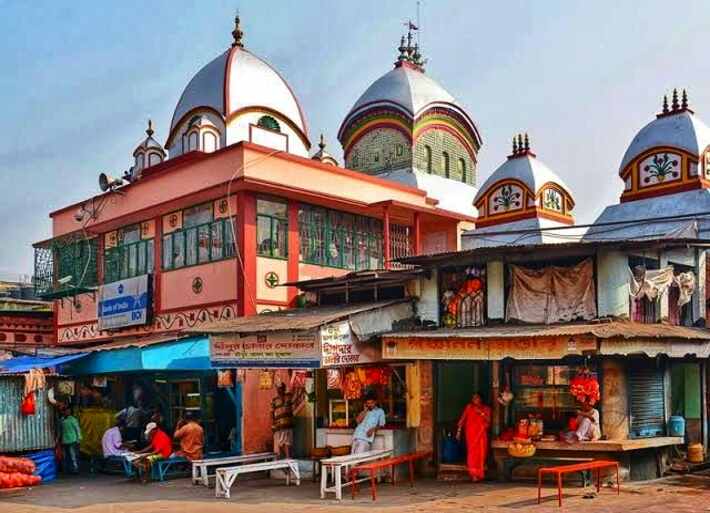
The Shakti Peethas, also known as Shakti Pithas, hold immense significance as places of worship for Goddess Shakti or Sati. According to ancient Puranas, they are where Sati’s body parts fell after her tragic demise. The legend of Sati’s sacrifice and Lord Vishnu‘s intervention connects these sacred sites, spreading their influence to different countries like India, Bangladesh, Pakistan, Nepal, Tibet, Sri Lanka, and Bhutan. West Bengal, India, boasts the highest number of these revered temples. This article will focus on 13 Shakti Peethas located in various regions of West Bengal, India.
1. Attahas Shakti Peetha
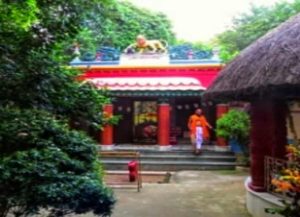
The Attahas Shakti Peetha is situated in the Village of Dakshindihi, Labhpur, within the District of Birbhum.

It is believed to be the place where the “Lower Lip” of Maa Sati fell, and she is revered as Ma Phullara at this location. Here, Lord Shiva is worshipped as Chandrsekhar Bhairava.
2. Bahula Shakti Peetha

The Bahula Shakti Peetha is situated on the Banks of the Ajay River, around 8 km from Katwa, at Ketugram.

It is believed that Maa Sati’s left arm, or left ‘Bahu’ in Sanskrit, fell in Ketugram. Interestingly, ‘Bahula’ translates to lavish, signifying the prosperity this goddess grants to her devotees. Thus, the reference to Bahula highlights the abundance and blessings she bestows upon those who worship her.
3. Bakreshwar Shakti Peetha

Bakreswar is well-known for the Bakreswar temple, dedicated to Lord Bakranath (Shiva) and Goddess Kali.

It is believed that the temple stands at the very spot where the forehead and brows of Goddess Sati fell. The temple’s architecture follows the Oriya style and is admired for its beauty. Within the temple complex, you can also find the Mahishmardini and Vakranath temples.
4.Yogadhya Shakti Peetha

Yogadhya Shakti Peetha is situated in the Khirgram Village of West Bengal.

The presiding deity is known as Mata Yogadhya, while Lord Shiva is revered as Khirakantha. According to mythology, the ‘right great toe’ of Goddess Sati fell at this sacred place. Unfortunately, the original Yogadhya Temple was demolished by Kalapahar. However, King Kirti Chandra later provided patronage, leading to the reconstruction of the southern facet of the temple between 1770 and 1780.
5. Kalighat Shakti Peetha

Kalighat is believed to be the location where the toes of the “right foot of Sati” fell.
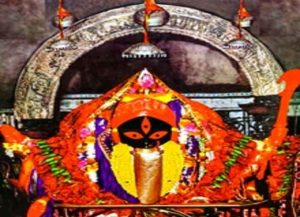
Originally situated on the bank of the river Hooghly, the temple now stands on the banks of a small canal known as Adi Ganga, which connects to the Hooghly
6. Kankalitala Shakti Peetha

This is one of the 13 Shakti Peethas in West Bengal, where the waist (kankal in Bengali) of Goddess Sati is believed to have fallen. It caused a depression in the earth, which eventually filled with water and formed the sacred kund beside the present temple.

Located on the banks of the Kopai River, 10 km North-East of Bolpur Station in Birbhum District, the deity is locally known as Kankaleshwari Devi.
7. Kireeteswar Shakti Peetha

Kiriteswari Temple, also known as Mukuteshwari Temple, holds a significant place in the Murshidabad district of West Bengal. It is considered the oldest, holiest, and renowned religious site in the area. The temple is situated in Kiritkona village, close to Lalbagh court road.

According to legend, the temple derives its name from the incident where Sati’s crown, known as ‘kirit,’ fell at Kireetkona village, leading to her being referred to as “Mukuteshwari” due to the falling of her crown.
8. Nalateshwari Shakti Peetha

The temple, also known as “Nalateshwari Temple,” is believed to be the sacred spot where the throat of Sati, referred to as “Nala,” fell.

The main deity worshipped here is Maa Nalateshwari, also known as “Maa” or “Bhagobidhata-Nalateswri.” Nestled amidst picturesque hills and lush forests, the Nallahati Shaktipeeth holds a serene and spiritual ambiance. Within the temple premises, there is a neem (margosa) tree with leaves having two distinct tastes – bitter and sweet.
9. Nandikeshwari Shakti Peetha
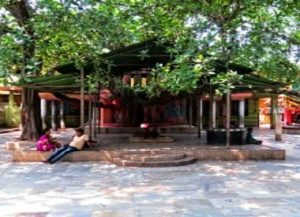
The name Nandikeshwari originates from the fusion of two words – ‘Nandi,’ the devoted follower of Lord Shiva, and ‘Ishwari,’ which translates to ‘Goddess.’ When combined, it signifies ‘one who is revered by Nandi, the divine bull.’

According to Hindu mythology, the Necklace of Sati descended at this sacred location. Here, Goddess Shakti is worshipped as Nandini, while Lord Bhairav is revered as Nandikeshwar.
10. Ratnavali Shakti Peetha

Ratnavali Shakti Peetha, also known as Maa Anandamayee Temple locally, is situated on the banks of the Ratnakar river in Khanakul, Hooghly.

According to legend, it is believed that the right shoulder (dakshina skandha) of Goddess Sati fell at this sacred location.
11. Tristrota Shakti Peetha
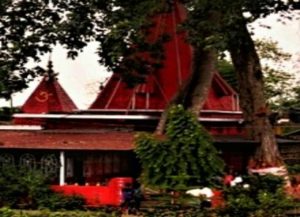
Bhramari Devi Temple, locally known as Maa Bhramari Temple, is situated in Shalbari village, Falakata, Jalpaiguri district, West Bengal. It sits gracefully along the banks of the Tista River, also known as Tri-Shrota due to the combination of three flows, as mentioned in the Puranas.

According to ancient scriptures, Maa Sati is revered as Goddess Bhramari, and it is believed that the thumb of her left leg fell at this sacred spot.
12. Ujani Shakti Peetha

Ujani Shakti Peetha, commonly referred to as the Mangal Chandi Temple, is located in Ujani Village, Guskara, Barddhaman.
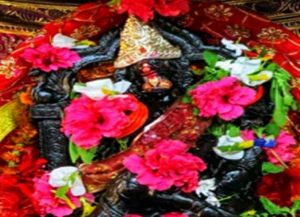
This revered place is where the right wrist of Devi Sati is believed to have fallen. At the Ujani Shakti Peetha, she is worshipped as Devi Mangala Chandika or Mangal Chandi, while Vairabh takes the form of Kapilambar.
13. Vibhash Shakti Peetha

Bargabhima Temple, also called Bhimakali Mandir or Vibhasha Shakti Peetha, is situated by the River Roopnarayana in Tamluk village.

This sacred site is where Devi Sati’s left ankle is believed to have descended. Here, the goddess is revered as Kapalini or Bhimarupa, while Lord Shiva is worshipped as Sarvanand.





